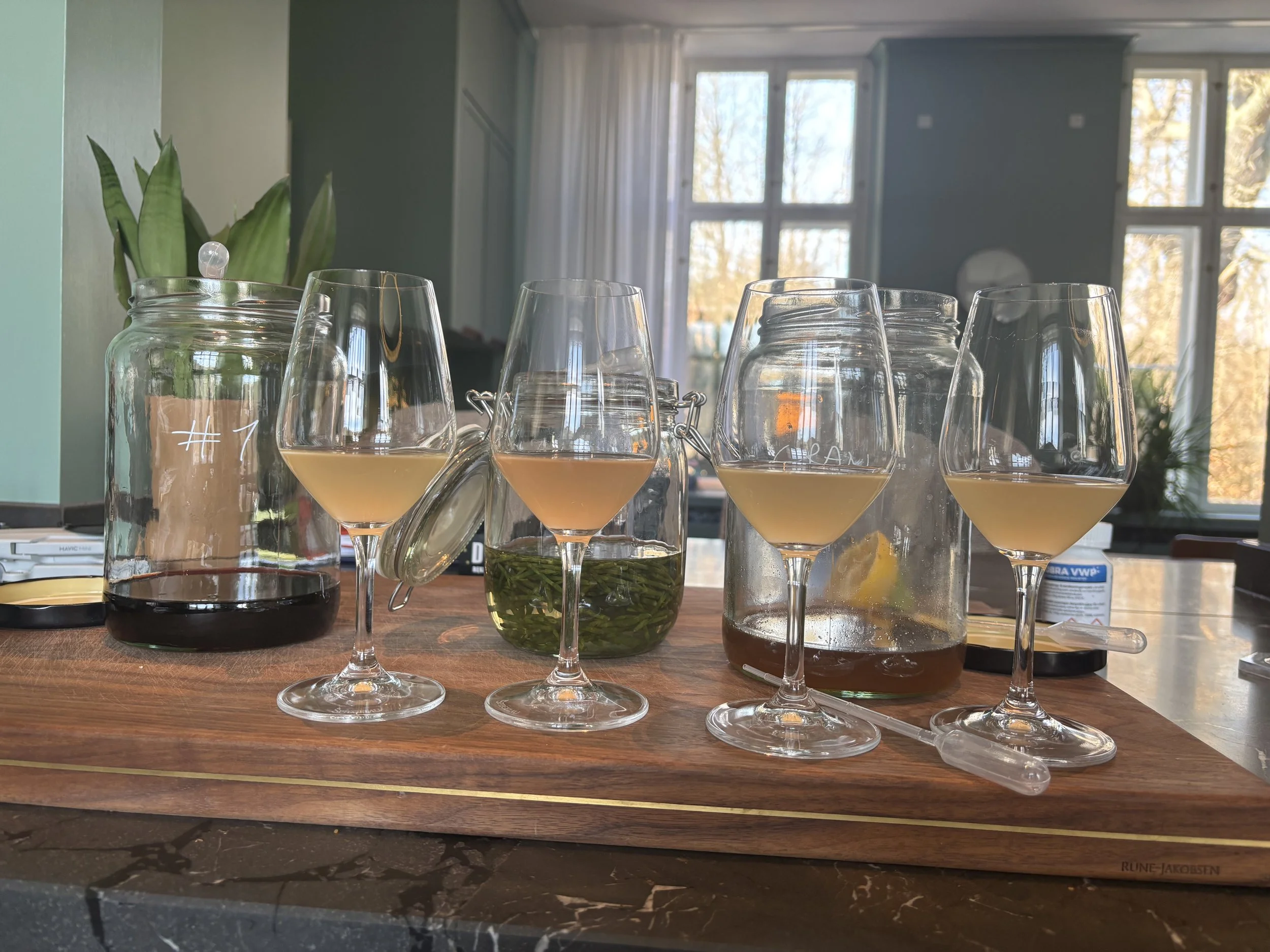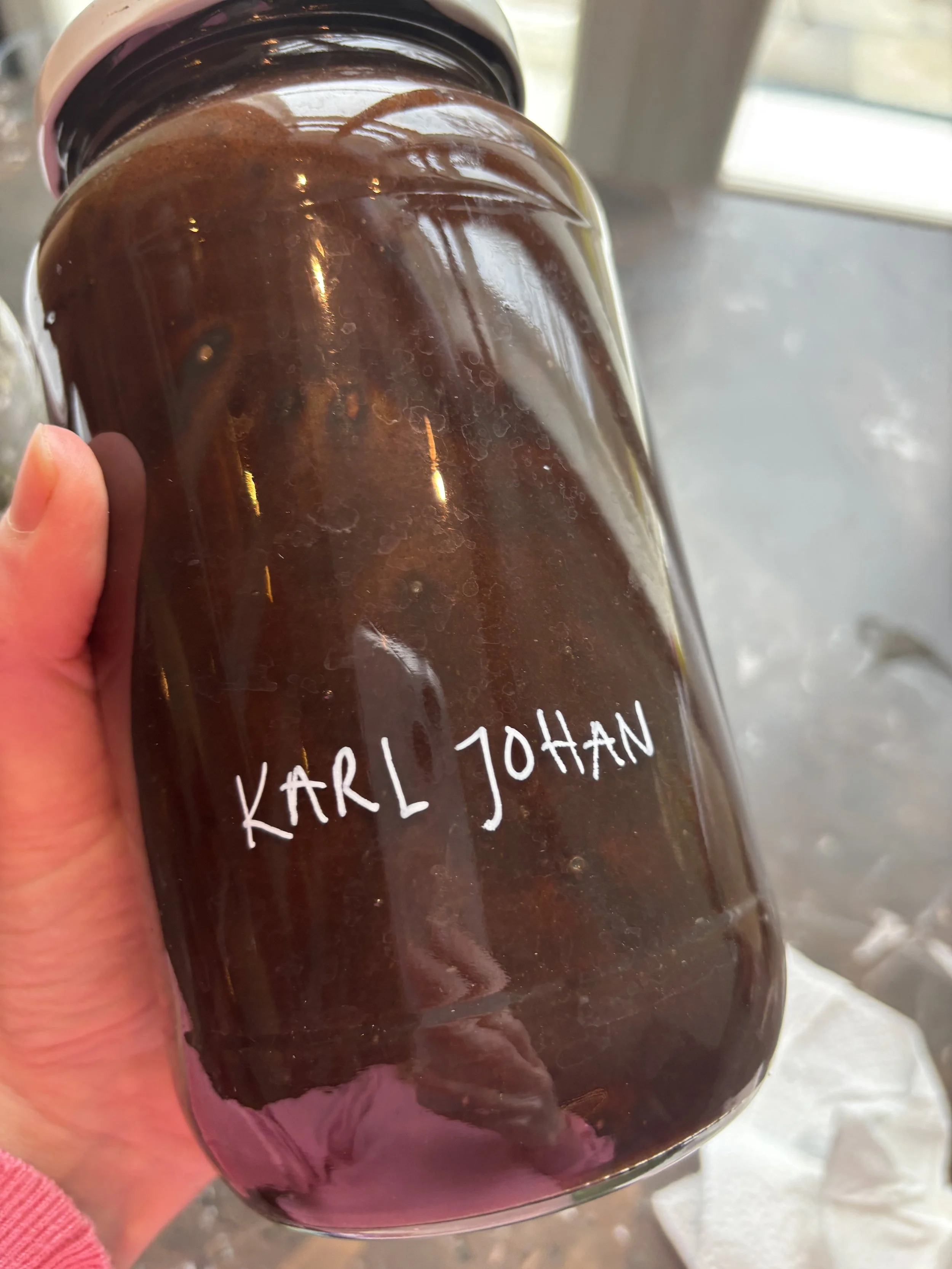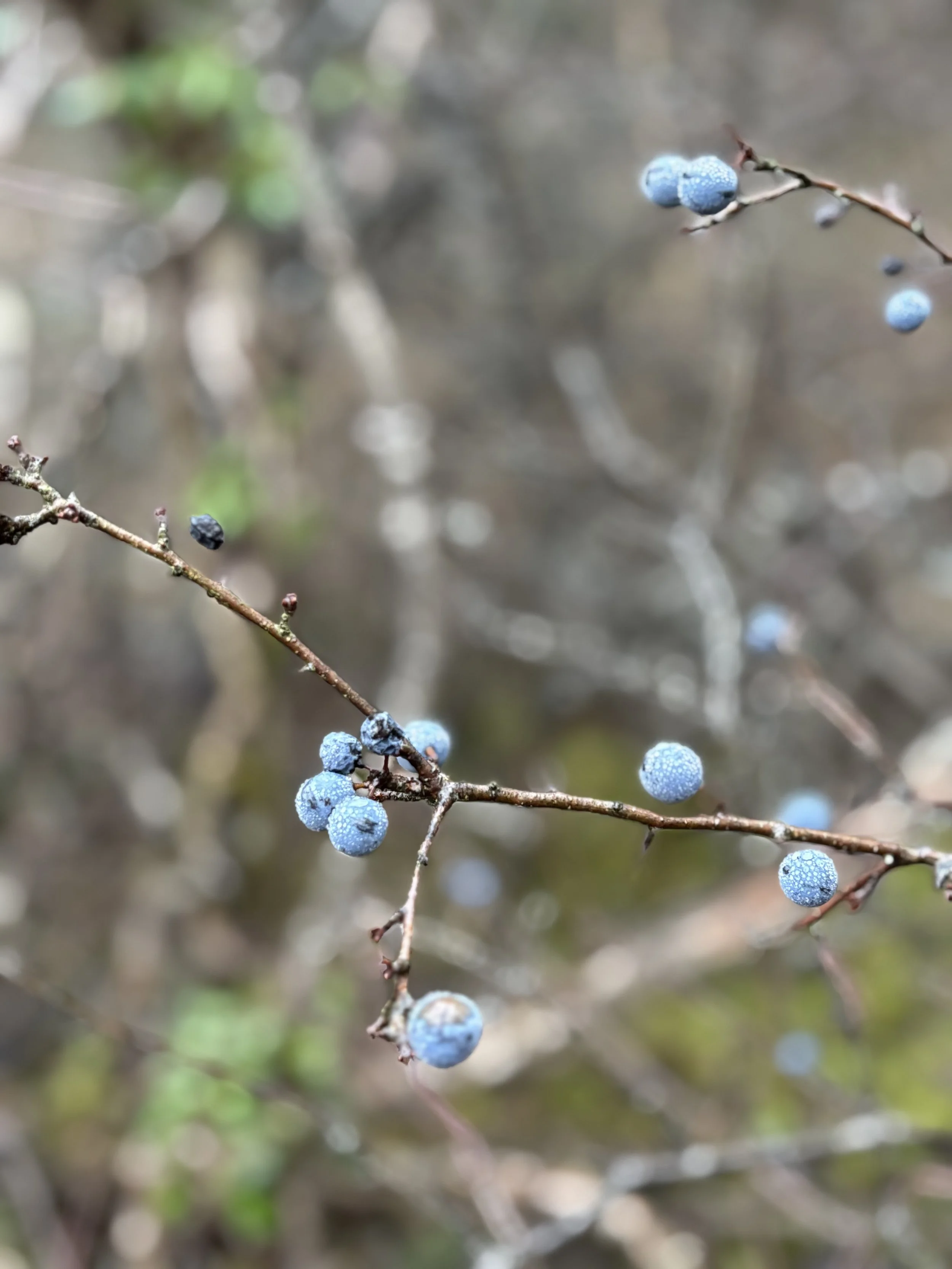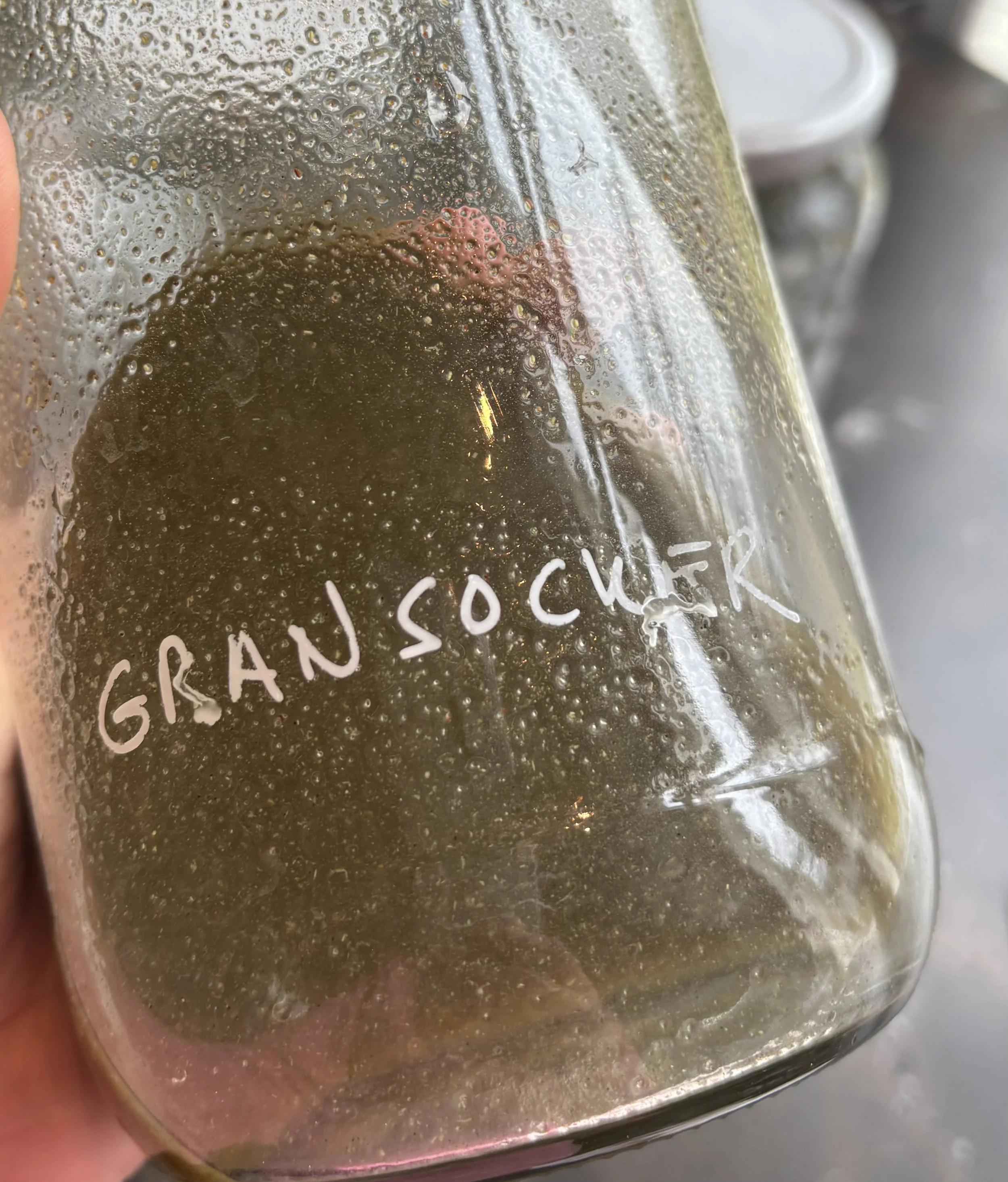Composing Flavor, Note by Note
Sampling the base wine for a sparkling wine (I am using the Champagne method)
The foundation is my gooseberry wine at 10.5% ABV. Now I’m testing different taste elevations:
#1 Nature unadorned
#2 Hibiscus & seaweed
#3 glasswort
#4 Spruce tips crushed with sugar
Curious to see which path captures the Nordic landscape best.
Our local nature is full of fascinating aromas and inspiration. But how do you capture that in a glass?
R&D journeys teach you patience, something I’ve never been very good at. But with every step, you discover something new. My first batches of Nordic wines, bottled back in late February, are only now ready to give me some real learnings. I now know it can be done, but balance is everything.
It’s also a challenge not to use any fining agents or sulfur, as I want to keep it as natural as possible. Instead, I work with methods such as cold stabilization and racking, while being very careful with hygiene.
Even though this is a creative process, Excel has become my best friend. I keep close track of temperature, gravity, fermentation, and development. Each note helps me see patterns, understand the wine better, and adjust along the way.
In my first tests, I’ve learned that it’s possible though balance is always the challenge. Fermenting wine with ingredients like Karl Johan mushrooms or spruce tips has taught me to sometimes be bold, and at other times more delicate in my approach.
I learnt that acidity is rarely a problem, but tannins can be tricky. Birch bark, however, has shown real promise, not overpowering, but offering a gentle touch that helps bring everything into balance.
The journey has only just begun, but every test, every batch, and every small discovery brings me closer to creating wines that truly express the Nordic landscape.



